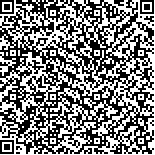| 摘要: |
| 围绕高质量发展的国家战略,聚集城
市更新的重要问题,发展了数据增强设计方法
并将之应用于城市街道空间品质评价与更新的
实践研究。以杭州市上城区为实证,设计了“品
质评价——空间分类——规划指引——更新
时序”的城市街道空间品质提升更新的技术框
架。基于多源数据的应用,建立了主观感知出发
的街道空间品质评价和客观街道空间形态分类
相结合的现状认知方法;设计了以“街段单元”
为更新改造对象的针对性更新规划指引;提出
了基于街道重要性的更新改造实施时序。充分
发挥了多源数据在城市街道空间现状评估、更
新规划和管理实施中的增强作用,为我国城市
的更新规划与品质提升提供了技术方法支撑和
实践借鉴。 |
| 关键词: 数据增强设计 街道空间 品质评价 街道分类 更新规划 |
| DOI:10.13791/j.cnki.hsfwest.20230316 |
| 分类号: |
| 基金项目:国家自然科学基金面上项目(51878593) |
|
| Urban Street Space Quality Evaluation and Renewal Countermeasures Based on Data Augmented Design: A Case Study of Shangcheng District of Hangzhou City |
|
WANG Jiwu,SHEN Huiqi,HU Xuewei
|
| Abstract: |
| Urban development has already entered a critical period of urban renewal. Stock
renewal focusing on improving urban quality has become an essential task of urban planning
and construction in China. The street is a vital part of urban space. It is not only the skeleton
that determines urban morphology but also the main form of public space. However, in the
process of accelerating urbanization, the street space often presents the problem of low spatial
quality, leaving users with bad subjective feelings. In the context of urban renewal, the necessity
and urgency of improving the street space quality have been gradually realized. Nonetheless, the
implementation of street space quality improvement is not simple. Streets are widely distributed,
have massive elements, and are closely related to public activities. Street space is a complex
space consisting of ground, top, street and building surfaces. In addition, although traditional
research methods can quickly carry out the renewal of a certain street or specific area, it is tough
to precisely describe the subjective feelings of citizens on a large scale. It is also hard to enforce
the systematic arrangement of street space quality evaluation, renovation, and management.
In recent years, technical methods for collecting and analyzing urban street view images have
rapidly developed, making large-scale urban street space analysis possible. However, the current
related articles mainly focus on the quality evaluation of street space, emphatically discussing
the relationship between the objective form of the street environment and people’s intuitive
cognition, and only a few of them would guide the specific space design.
Focusing on the national strategy of high-quality development and considering the important
problems of urban renewal, the method based on data augmented design is developed and applied
to the whole process of urban street space quality evaluation and renewal. This paper designs a
technical framework of “quality evaluation-spatial classification-planning guidelines-renewal
sequence” for improving urban street space quality. Specifically, collect street view images and use
the methods of small sample comparison, Elo rating system, and convolutional neural network model
to obtain the distribution of low-quality street space from users’ subjective feelings. Then, taking
the “Street Segment Unit” as the smallest research unit, collect the related features of street space
functions and elements, and cluster the low-quality street. On this basis, it puts forward targeted
street renewal planning guidelines. Finally, it obtains the crowd distribution characteristics based on
the telecommunication data, and correlates it with low-quality streets to propose street update timing
recommendations.
This technical method was applied to the Shangcheng District of Hangzhou City. The results
showed that: firstly, low-quality streets were mainly distributed in the Sibao-Qibao unit and Dingqiao
unit. Secondly, low-quality streets were finally divided into ten categories according to functional and spatial elements, showing different characteristics and suitable for different updating strategies. Thirdly, the streets proposed to be updated shortly were
mainly located in the lakeside area, Kaixuan unit, international trade city unit, and Dingqiao unit.
Relying on multi-source data, a status quo awareness approach that combines subjective and objective perspectives is established, including the street
space quality evaluation based on users’ perception and the street space form classification given existing elements. The targeted planning guidelines
which take the “Street Segment Unit” as the renovation object are designed. The implementation sequence of renewal based on the importance of streets is
proposed. This technical process makes full use of multi-source data in the evaluation, planning, and implementation of urban street space. And it provides
technical method support and practical reference for the renewal planning and quality improvement of cities in China. |
| Key words: Data Augmented Design Street Space Quality Evaluation Street Classification Renewal Planning |


